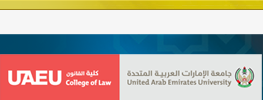Abstract
terrestrial environment and the statement of what environmental pollution is, the terrestrial environment means soil, which is the earth, that important element of the environment, it is where human settle, and has his residence and shelter, it is the source of his food, just as it is the settle of animals and their source of food.
However, this terrestrial environment has been exposed to environmental pollution, namely all human and natural activities that contribute to the presence of any pollutants or agents in the environment in quantities or characteristics for a period of time that may lead directly or indirectly alone or in interaction with others to damage public health or to carry out actions and activities that may lead to the degradation of the natural ecosystem or hinder the enjoyment of life and the use of private and public property, in terms of the source of pollution, it is the place through which substances, pollutants or energy are released or emitted to the surrounding environment, and the source of pollution may be fixed (such as chimneys) and may be mobile (such as vehicles), and pollution may be natural that occurs because of no human will. It may be through natural pollutants such as dust particles in the air, and there is human-caused pollution, which is the subject of our study in the detail contained in the research, and pollution in its nature is four types, chemical pollution, physical pollution, biological pollution and radioactive pollution.
In the First Section of this study, we dealt with the management of chemicals and hazardous waste, and we followed with what the Kuwaiti legislator follow in the Environmental Protection Law No. 42 of 2014. The subject of this topic was dealt with through the first chapter of Section Two of the aforementioned law, where this topic was monitored Articles from 21 to 39, which we have studied and analyzed, to stand on the strength and weaknesses of these Articles.
As for the Second Section of this study, the legislator stipulated, through the second chapter of Section Two of the aforementioned law, the protection of the wild and agricultural environment, starting from Article 40 to Article 47, and we therefore analyzed these Articles with the help of the executive regulations of the law in this regard.
تناول هذا البحث مفهوم البيئة الأرضية، وبيان ماهية التلوث البيئي، فالبيئة الأرضية تعني التربة وهي الأرض، ذلك العنصر المهم من عناصر البيئة، فهي مستقر الإنسان، وعليها إقامته ومأواه، وهي مصدر غذائه كما أنها مستقر الحيوانات ومصدر غذائها.
ولكن هذه البيئة الأرضية قد تعرضت إلى التلوث البيئي الذي هو عبارة عن جميع الأنشطة البشرية والطبيعية التي تساهم في وجود أي من المواد أو العوامل الملوثة في البيئة بكميات أو صفات لمدة زمنية قد تؤدي بطريق مباشر أو غير مباشر وحدها أو بتفاعل مع غيرها إلى الأضرار بالصحة العامة أو القيام بأعمال وأنشطة قد تؤدي إلى تدهور النظام البيئي الطبيعي أو يعيق الاستمتاع بالحياة والاستفادة من الممتلكات الخاصة والعامة، ومن حيث مصدر التلوث فهو المكان الذي يتم من خلاله صرف أو إطلاق أو انبعاث المواد أو الملوثات أو الطاقة إلى البيئة المحيطة، ومصدر التلوث قد يكون ثابتاً (كالمداخن)، وقد يكون متنقلاً (كالمركبات)، والتلوث قد يكون طبيعيًا الذي يحدث بسبب لا دخل لإرادة الإنسان فيه، وقد يكون عن طريق ملوثات طبيعية مثل ذرات الغبار في الهواء، وهناك التلوث الذي يتم بفعل الإنسان وهو محل دراستنا على التفصيل الوارد بالبحث، والتلوث من حيث طبيعته أربعة أنواع: تلوث كيميائي، وتلوث فيزيائي، وتلوث بيولوجي، وتلوث إشعاعي.
وتناولنا في المبحث الأول من هذه الدراسة إدارة المواد الكيميائية والنفايات الخطرة، وقد سرنا على ما سار عليه المشرع الكويتي في قانون حماية البيئة رقم 42 لسنة 2014، فقد تناول موضوع هذا المبحث من خلال الفصل الأول من الباب الثاني من القانون سالف الذكر؛ إذ رصد لهذا الموضوع المواد من 21 إلى 39 التي قمنا بدراستها وتحليلها لنقف على نقاط الصحة والضعف فيها.
أما المبحث الثاني فقد نص المشرع من خلال الفصل الثاني من الباب الثاني على حماية البيئة البرية والزراعية بدءًا من المادة 40 حتى المادة 47، وقمنا تبعًا لها بتحليل هذه المواد بالاستعانة باللائحة التنفيذية للقانون في هذا الصدد.
Recommended Citation
Al-Rajhi, Bader Ahmed Dr.
(2023)
"The Objective Penal Protection of the Terrestrial Environment in light of the Provisions of the Kuwaiti Environmental Protection Law, its Amendments and Implementing Regulations,"
UAEU Law Journal: Vol. 2023:
No.
93, Article 7.
Available at:
https://scholarworks.uaeu.ac.ae/sharia_and_law/vol2023/iss93/7

